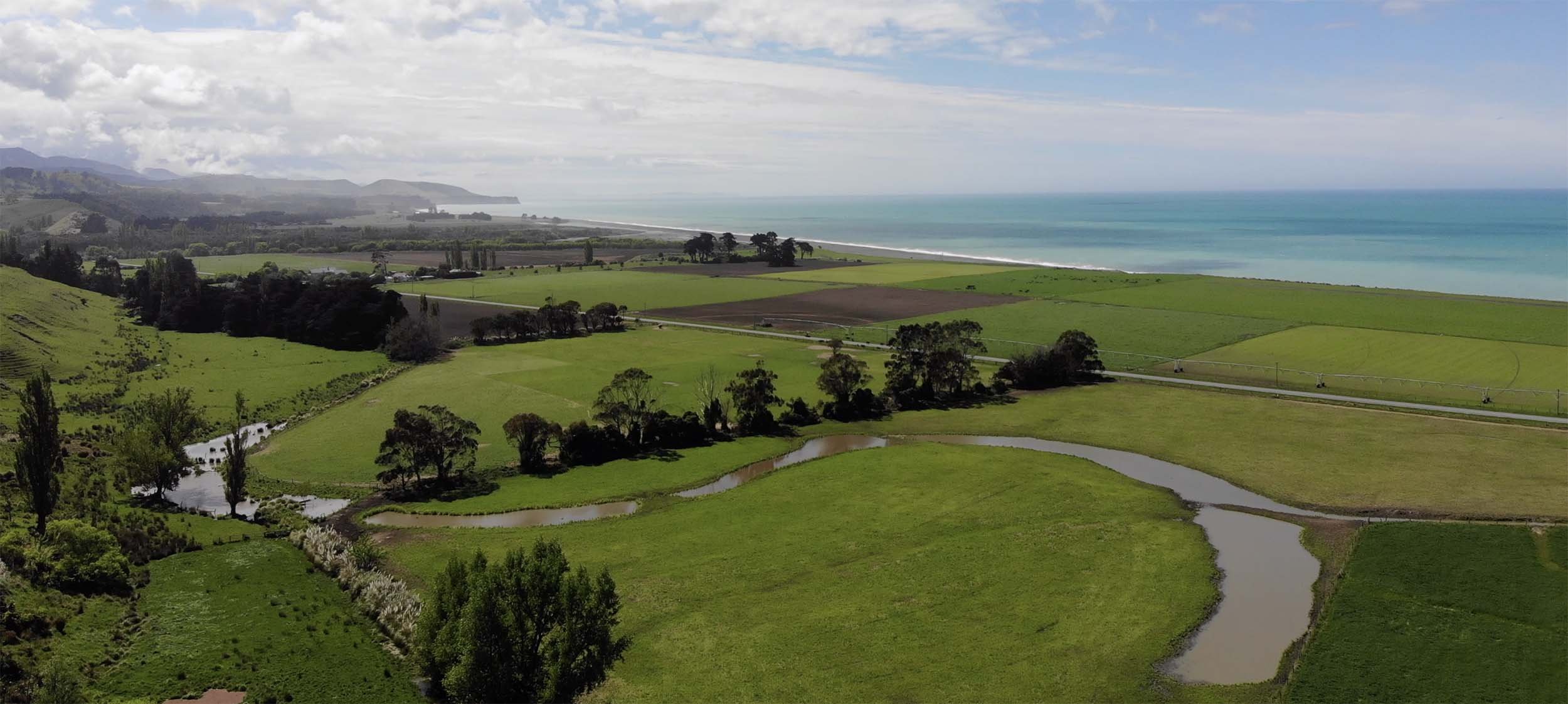
New Investor backs Feed Efficiency
Article written May 2022
When Thomas Grothe heard that Te Mania was looking for an investor last year, he didn’t sit on his hands. Thomas, who’s of German descent, was keen to be part of New Zealand’s farming industry and he needed the right engine.
Te Mania had been through its share of financial difficulties but what Thomas saw was a thriving stud business with strong foundations, a keen eye for progression in new technologies, and Will Wilding ‒ the young man with an innovative mind, vast knowledge, and a desperate desire to make it all work.
“I had heard about the reputation of Te Mania’s cattle and I wanted to be part of it. I wanted to enable them to take further steps with my financial backing,” says Thomas.
Will says when Thomas first began discussions with the Wilding family, he was particularly interested in the talk about improving feed efficiency.
“Methane is going to be the next big issue for farmers and we know that Net Feed Intake and methane emissions are closely correlated at 0.9,” says Will.
One of the first partnerships that was forged when Thomas came on board was with Vytelle, a global precision livestock company focused on reshaping the industry and fast-forwarding genetic progress. Vytelle Sense is a research feed-pad technology that identifies the most efficient/elite performing animals with an individual animal feed intake and weight-gain data capture system. Animals are run through a feed pad in groups of 35 bulls or 40 heifers for 66 days and the Vytelle technology collects individual weight, feed intake and behaviour data on cattle in the pens as they eat and drink.
Vytelle makes the claim that genetic selection for feed efficiency will reduce feed intake by up to 12%, reduce methane production by 30% and improve profitability.
Thomas says, “If we can increase feed efficiency, and consequently decrease methane emissions, then I think we are taking farming in the right direction. These claims need to be proven and I’m willing to invest in trials to prove they are accurate.”
(L to R) Thomas Grothe, Tim Wilding and Will Wilding
Since shifting to AngusPRO, Te Mania has access to the Net Feed Efficiency EBV. However, this is calculated with genomics alone and has a moderate accuracy of about 40%. The addition of phenotypic data from the feed pad will improve this accuracy.
In the past, Te Mania has made its mark on the environmental grandstand with its fertiliser programs, however, paving the way with this new feed-efficiency project will make a much larger impact,” Will says.
“If we can identify and breed from genetic profiles that are better for the environment, we can reduce our environmental footprint in a much greater way.”
The facility itself is already there in bones. A feed pad was built in the 1990s as a quarantine facility for export cattle. It’s been during calf weaning for the past five years but is now being repurposed. The maximum capacity of the four feed pads is 16 groups of either 35 bulls of 40 heifers a year.
Three of the feed pads will be used by Te Mania full time and one will be available for use by other AngusPRO members, or may be of interest in beef trials. Quantity of feed will be the only handbrake for the first year, as Will needs to grow a much higher tonnage of lucerne silage, and possibly maize silage, to feed in the bins.
As the newly named General Manager and Stud Master, Will is not just focused on feed efficiency, but also on the unchanged core values of the stud. Maternal qualities are first and foremost – a cow that gets in calf every year calves easily, then repeats this every year thereafter. Growth comes in next and although the ‘balance’ term has been bandied around a lot recently and sounds cliché, the Te Mania herd are genuine hill country cows that live in the hills for more time than they do on the flats.
“Our core philosophy hasn’t changed, but new technologies are allowing us to select and make breeding decisions on a whole new playing field,” Will says.
Monday 12th September was an exciting day for the Te Mania team, as the first 106 bulls entered the new Vytelle GrowSafe feed unit. They have 11 days of pre-trial, as they learn to use the feeding system, before entering 49 days of recorded feeding and weighing. The bull’s EID tag is scanned as he feeds from the bins and the feed is continuously weighed. Then he is weighed as he drinks from the trough.
Embryo transplant (ET) will allow Te Mania to flush the most feed-efficient females in the herd, and after sourcing semen from the most feed efficient sires they’ll be able to generate a refined bloodline that has reduced methane emissions and this will undoubtably have appeal to the end consumer. The commercial farmer will be interested too of course, as the positive effect on profitability is a certainty.
Te Mania has always been at the front of the innovation game in New Zealand ‒ the first to weigh calves, have scales on farm and the first to join BreedPlan. The history of innovation is there. Technology is now the future of cattle breeding, although it comes at great expense. Having Thomas come on board has provided much needed financial stability, eased the burden of farm succession and allowed Te Mania to invest in technology that will catapult the stud back to the forefront of the stud-breeding game.
Thomas is keen to increase Te Mania’s production by 10% year on year. The two-year-old auction’s bull numbers aren’t expected to change but he and Will are looking at ways to increase bull numbers through other avenues. The number of yearlings sold at the October bull sale is expected to rise, possibly decreasing the number that would be available for private sale.
“This facility has been an investment in our clients' future profitability and a genetic head start, as markets are developed around beef with reduced emissions and environmental impact.” - Will Wilding
“Every year the cohort of bulls is becoming more condensed, especially with the ET. This is reducing wastage and ultimately lifting the quality of what we sell at auction,” Will says.
Will has his feet firmly planted at Te Mania and is there for the long haul. Without sounding too hushed on the matter, there are projects in the pipeline that excite him and he sees the reduction in waste bulls as being a big bonus.
Thomas spends 50% of his time on farm at Conway Flat and isn’t afraid to get his hands dirty, whether it’s pouring concrete or surveying a new road through the blackberry.
“I found a partner who needed some investment. I had the money and Will has the knowledge, so I see it as a win-win,” says Thomas.
Whatever way you look at it, the future is bright for Te Mania, even without the pink shirts.
Net Feed Intake Explained
Cattle of all breeds eat variable amounts each day, some more, some less than their counterparts, while gaining the same weight. This is due to each animal’s net feed intake (NFI) or the difference between an animal’s actual feed intake and predicted feed intake, for a given level of production.
NFI is a moderately heritable trait; therefore it can be used in parallel with other performance selection criteria and will be passed on to progeny with confidence.
Selecting for low, or desirable, NFI won’t affect frame size, growth, or carcass quality in any breeds, making it a risk-free factor in genetic selection.





